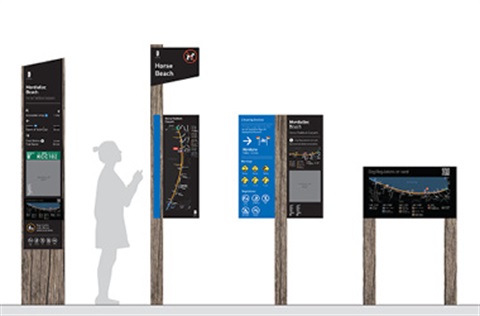
With so many things to see and do in Kingston, we are making it easier to find your way around our city.
Our new wayfinding strategy provides a clear and unified approach to the planning, design and implementation of our open spaces and activity centre signs.
Designing good signage is surprisingly complex – with best practice recommending that signs need to be simple, easy to read, easy to understand and accessible for all.
Developed by a leading consultant and based on the internationally recognised Legible London, the strategy was widely supported during recent community consultation and guides how to do this, with considerations including font sizes and best colours for vision impaired people, height of information, use of symbols, simple English, and heads-up maps all covered.
Acting Mayor Chris Hill said by providing signage that is easy to see, read and understand we hope to make Kingston an easier and even more enjoyable place to visit for all.
“We want to make it clear and simple for people of all abilities to be able to enjoy Kingston’s many parks, cycling/walking paths, shopping precincts and more,” Cr Hill said.
“Kingston has a lot of varied signs. Some of them are good, but some of them are quite old and need replacing. We now have a consistent approach moving forward, with the signs to follow an agreed contemporary format.
“We want our signs to provide important information, while keeping Kingston looking good.”
The new signage designs feature artwork from well-respected elder and artist Heather Kennedy and Bunurong women. The artwork featured is titled Coming Together to Meeting Place As One.
Among the key features of the new signs are:
- Inclusive, DDA accessible information that is easy for everyone to use.
- Informative and useful but non-intrusive design.
- Information is clearly and consistently structured.
- Consistent look and feel.
- Integrates with surrounding environment (ie: park furniture) to reduce visual clutter.
- Links with public transport and major destinations.
- Appropriately sized and located to suit pedestrians, cyclists and (where appropriate) motorists
- Use maps that are oriented the way the user is facing.
- Robust materials that are easier to maintain and repair.
Read the strategy at https://www.kingston.vic.gov.au/council/council-documents/plans-policies-and-reports/wayfinding-strategy.








